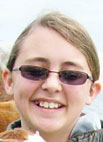
In 33 years as an agriculture education instructor, Sam Lower of Lebanon Technology and Career Center, a part of Lebanon High School, has seen an incredible number of changes and also has great hope for the future.
“The biggest change over the years is the number of current students who live on a production farm. As a result, our students today don’t have that production knowledge or concept that they did 30 years ago. Today, I’d say less than 10 percent of the 200 students we have in ag classes, live on a farm and they are two or three generations away from it.”
He continued with a contagious enthusiasm that makes his classroom an energetic learning environment consisting of science and technology in addition to traditional ag practices, making agriculture an important part of a 21st Century education. “The second biggest change is that agriculture education is so much more diverse now than in years past. We now have landscaping, horticulture, wildlife, forestry and horse teams; so many more things than we did in years past. We have horticulture education, for instance, which I see as life skills education. Think about it. Sooner or later, many people who might not have anything to do with traditional agriculture use horticulture skills when they are working with gardens, lawns and landscaping. Agriculture isn’t just about beef, pigs and dairy anymore, like it once was.”
He leaned back in his office chair with a big smile. “The really surprising part is that the number of students in our agriculture and FFA programs has grown dramatically. Even though there are not as many farm kids, there are more kids than we’ve ever had who want hands-on skills and to learn about real things, like trees and animals. And then there are the numbers of female students in FFA and agriculture education now as compared to the past. When I started, girls made up less than 10 percent of the students and today it’s a nice even 50 percent.
“Of course, technology and the use of computers have changed the way kids study and the way records are kept. When I started, all the things kids had to do for their contests, the records they kept were all done by hand. Today, it’s all on the computer. In landscaping, for instance, we take a digital photo of the home they want to landscape and then they can do it all right there on the computer as well. What a great way to teach technical skills on several levels. We’ve actually landscaped the houses the carpentry classes have built, as a result of this. We’ve certainly come a long way from the single ag teacher I was when I started with 40 kids to the three ag teachers and 200 kids we have in class today.”
Sam is now teaching part-time, living in Marshfield, Mo., with his wife, Cathy, where she works part-time for Day Funeral Home. “We’ve always lived in Marshfield,” he smiled. “I started out the first few years, working in Conway, Mo., and then moved over here to Lebanon.” He is no longer actively involved in farming himself. Retired from beef production, Sam owns 16 acres and two horses and occasionally some spring calves, yet his impact on the future of agriculture in this region is undeniable.







